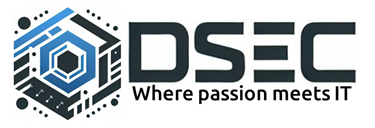
Introduction
The process layer is about planning, budgeting, monitoring and the governance of software development projects and software maintenance organizations.
In the process layer the model makes a distinction between Methodology, Guidance and Roles & Responsibilities.
Detailed layer description
Methodology

There are various software development methodologies that can be used to guide the software development process, including agile, waterfall, and incremental development. Each methodology has its own strengths and weaknesses, and the choice of methodology can have a significant impact on the overall success of the project.
There are several key aspects to consider when choosing a methodology for a software development project:
- Suitability for the project: The methodology should be suitable for the size, complexity, and goals of the project. For example, a small project with a short timeline might be best suited to a lightweight agile methodology, while a larger, more complex project might require a more comprehensive and disciplined approach like the iterative model.
- Team capabilities: The team’s skills and experience should be taken into account when choosing a methodology. Some methodologies require a high degree of discipline and structure, while others are more flexible and adaptable.
- Time constraints: The methodology should be able to accommodate the time constraints of the project. Some methodologies, such as Waterfall, require a lot of upfront planning and may not be suitable for projects with tight deadlines.
- Quality and risk management: The methodology should include appropriate quality assurance and risk management processes to ensure that the end product meets the required standards and that any potential issues are addressed in a timely manner.
- Communication and collaboration: The methodology should support effective communication and collaboration among team members and stakeholders. This is especially important in agile methodologies, which rely on frequent communication and feedback.
- Resource constraints: The methodology should be able to work within the available resources, including budget and personnel.
- Maintainability and scalability: The methodology should allow for the maintenance and future expansion of the software as needed.
Guidance
When looking at software engineering from a process perspective, it is important to provide guidance to the team on how to effectively manage and execute the software development process. This can include guidance on the following topics:
- Software development methodology: Providing guidance on the software development methodology being used, such as agile, waterfall, or incremental development. This can include information on the principles, practices, and artifacts of the chosen methodology.
- Project management: Providing guidance on how to manage the software development project effectively, including how to create a project plan, allocate resources, and track progress.
- Requirements gathering and analysis: Providing guidance on how to gather and analyze user and business requirements, and how to use those requirements to drive the design and development of the software.
- Design: Providing guidance on how to create an effective design for the software, including how to specify the overall architecture and individual components, and how to create design documentation.
- Implementation: Providing guidance on how to write and test the code to implement the software functionality and features.
- Testing: Providing guidance on how to conduct various types of testing to ensure that the software is of high quality and meets the requirements.
- Deployment: Providing guidance on how to install and configure the software in the production environment.
- Maintenance: Providing guidance on how to support and maintain the software over time, including how to fix bugs and add new features.
Providing clear and comprehensive guidance on these topics can help the team to execute the software development process effectively and efficiently, and can contribute to the overall success of the project.
Roles and responsibilities
There are several key aspects to consider with regard to roles and responsibilities in a software development project:
- Project scope: It is important to clearly define the scope of the project, including the goals and objectives, the deliverables, and any constraints or limitations. This will help to ensure that everyone understands their roles and responsibilities within the project.
- Team structure: The team structure should be designed to effectively support the project and should include roles such as project manager, software developers, quality assurance testers, and any other necessary roles.
- Communication: Effective communication is key to the success of any project. It is important to establish clear channels of communication between team members and stakeholders, and to ensure that everyone is aware of their roles and responsibilities in the project.
- Planning: A well-planned project is more likely to be successful. It is important to establish a project plan that outlines the tasks and milestones that need to be completed, as well as a timeline for completing them.
- Risk management: It is important to identify and manage any potential risks that may arise during the project. This includes identifying potential risks, developing contingency plans, and regularly monitoring and reviewing the project to identify and address any issues that may arise.
- Quality assurance: Ensuring that the project meets the required quality standards is a key responsibility of the team. This includes conducting testing and quality assurance activities to ensure that the software meets the specified requirements and functions as expected.
Capability Maturity Assessment
The following should be considered when assessing an organization’s capability with regard to process.
Methodology
- Common public methods are an integrated part and cohesively applied within the development environment.
- These methods are aligned with the organization of the development organization and production process.
Guidance
- For the selected methods support is unequivocal available and accessible in the form of documentation, coaching, etc.
Roles & Responsibilities
- Roles and responsibilities within the method based production process are described and assigned.
